GEOS 24705 / ENST 24705 / ENSC 21100
Energy: Science, Technology, and Human Usage (2018)
Prof: Liz Moyer (Hinds 405)
TA: Jim Franke (Hinds 491)
Field trip coordinator: Mia Leatherman
Info (see documents below for more)
The course meets Tuesdays and Thursdays from 3:30-4:50 PM in Cobb 119. Jim's office hours are Mondays 4-5 PM and Wednesdays 3-4 PM in Hinds 491. Lab is Wednesday 4-5 PM in Hinds 430.
There are labs and field trips nearly every week but not all are mandatory. Course requirements include attendance at at least three field trips and at least four labs. Field trips will generally be Friday mornings.
The course description from 2017 is
here. The
syllabus with schedule of field trips and labs is
here.
Photos are available from field trips in 2010 and 2011.
Lecture 1: Human energy use, energy and wealth
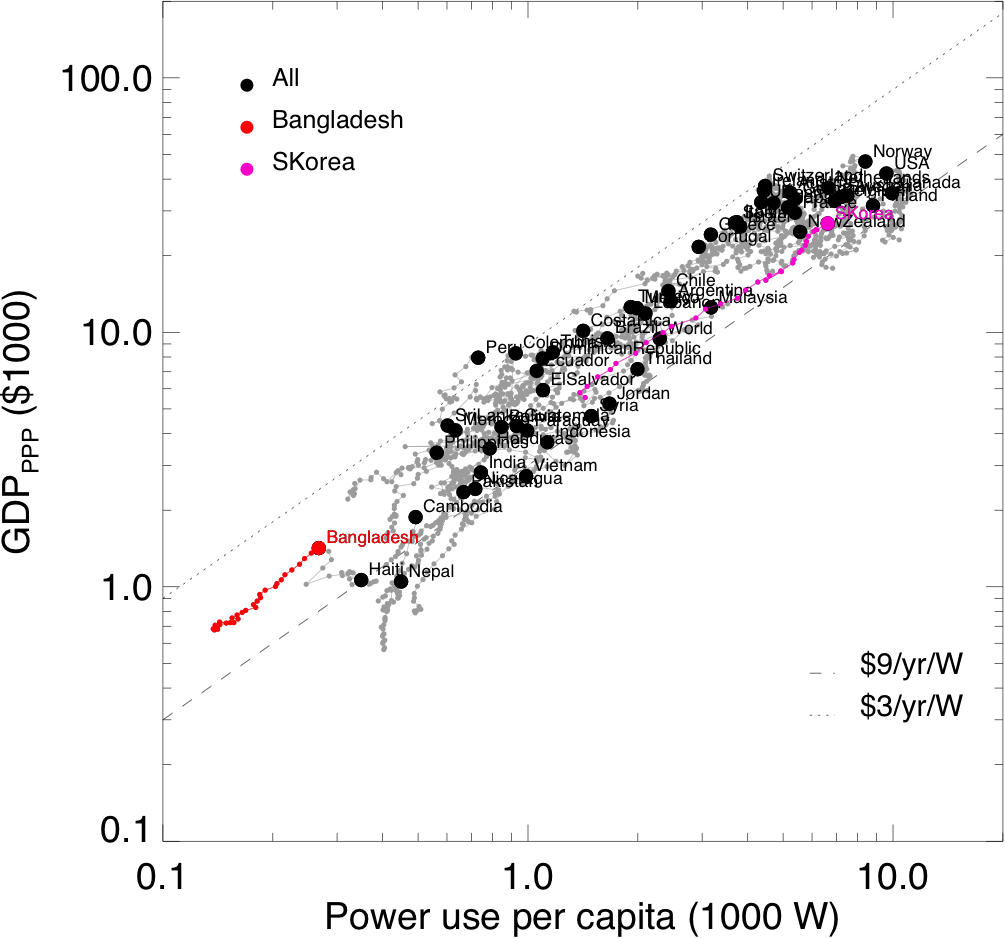 Energy / wealth relationship. Data: World Bank 1960-2011.
Energy / wealth relationship. Data: World Bank 1960-2011.
Lecture 1 slides.
No problem set for lecture 1.
Lecture 2: Human energy use, Earth's energy flows
 Earth's primary energy flows.
Earth's primary energy flows.
Lecture 2 slides
Problem set 2. Due Tuesday April 3.
Lecture 3: Are the Earth's energy flows enough? Intro to photosynthesis and agriculture
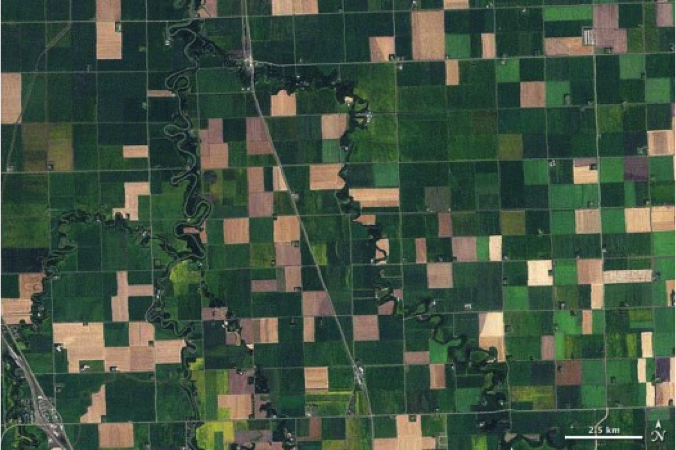 Fields in Oklahoma, Oklahoma Farm Report
Fields in Oklahoma, Oklahoma Farm Report
Lecture 3 slides
No PS3.
Lecture 4: Agriculture & the Green Revolution; transition to the modern energy system
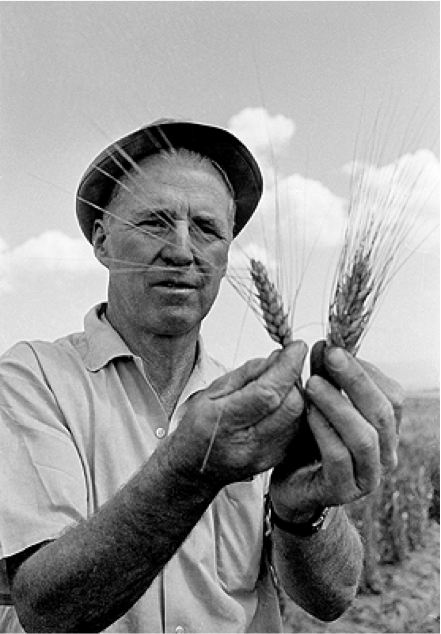

Norman Borlaug (L), Sankey diagram of 2012 US energy use (R).
Lecture 4 slides.
Readings. You'll need to read the first two before Thursday this week, and ideally you'd get started by the Wednesday lecture.
- Pre-Industrial-Revolution growth in human energy use (15th-18th centuries): the
chapter on energy
from "The Structures of Everyday Life", by the historian Fernand Braudel.
It is OK to skim the long section on animal power. Pay especial attention to concluding remarks on p. 371-372.
- An essay by Smil from Nature, 2000, on the history of the horse as a source of mechanical work for humans.
- Optional: Notes on the power of horses, this article from Nature (Scientific Correspondence), 1993. Read only after finishing the problem set.
- Optional: Notes on the power of humans, an article from Human Power 1989, describing the calculations of the MIT engineers who built the Daedalus, the plane that set the world record in 1988 for distance by a human-powered airplane (which still holds today).
Problem set 4. Due Tuesday April 11.
Lecture 5: Pre-industrial energy use
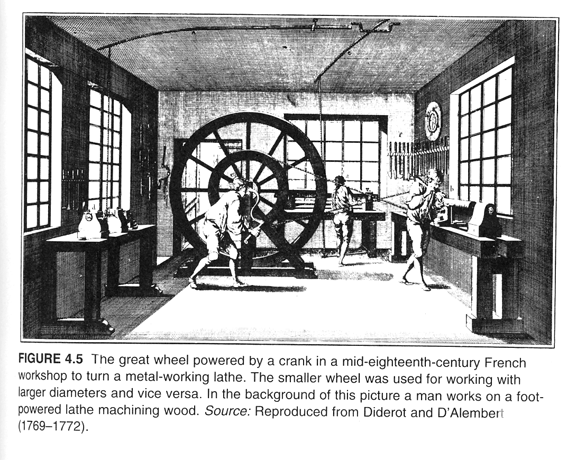

Hand-turned lathe, Diderot and d'Alembert, L'Encyclopedie, 1769-1772. Horse-drawn combine, U.S., 1910s-1920s.
Lecture 5 slides as pdf and
pptx so you can see the animations.
Problem set 5. Due Thursday April 12 (but extensions automatic).
Lecture 6: Breaking the heat-to-work barrier

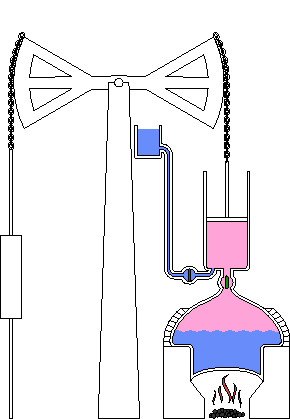
First commercial steam engine: Newcomen 1712.
Lecture 6 slides as pdf and
pptx so you can see the animations.
Readings:
- For the next problem set you'll need sections from Galloway, "History of Coal Mining in Great Britain". (See problem set for which sections.) The book is available online as an e-book. (It is out of copyright since it was written in 1882).
- Optional: for some reading on steam engines, see this nice page on the history of steam engines set up by a professor from Michigan State.
Problem set 6. Due Tuesday April 17.
Lecture 7: The birth of the industrial revolution, theory of heat engines
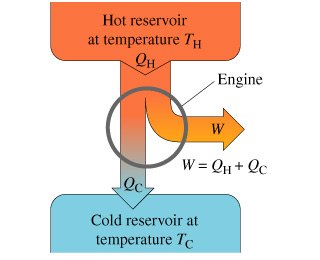

Left: the heat engine. Right: stages of the Carnot cycle
Lecture 7 slides in
pdf
and pptx.
Problem set 7. Due Thursday April 19.
Readings (both required and optional):
Background about the fundamental theory behind heat-to-work, first laid out by Carnot, that we covered in class. See PS7 for which sections are required.
Lecture 8: The Industrial Revolution
 Child workers in in the Bibb Mill in Macon, GA., between 1908-1912. Photo: Lewis Hine
Child workers in in the Bibb Mill in Macon, GA., between 1908-1912. Photo: Lewis Hine
Lecture 8 slides.
Problem set 8. Due Tuesday April 23.
Readings (optional, just for more interesting background):
-
To get a sense of what railroads meant to the U.S., and to Chicago in particular, read the beginning of Chapter 2 ("Rails and Water") in Cronon's book about Chicago, Nature's Metropolis, from p. 55 to 76. This is one of the great works of environmental studies.
You can read this section via Google books here.
- To understand the transition from water power to steam power in the U.K., see this article about the switch, focusing on the cotton industry. The author argues that steam engines were more expensive, and further water resources were available, but those potential sites for water power were too far from cities where labor had concentrated. The stean engine in contrast could be brought to the site of the labor.
- A second article by the same author describes a failed plan, just before the advent of steam in Britain, to massively increase waterpower use through a huge water works project in Scotland, creating aqueducts and reservoirs. The plan looked successful at first -- "Accounts of Thom's achievements in the British press were filled with the expectation that water was on the verge of a nationwide comeback, rolling back the challenge of Watt's engine" -- but there was no enthusiasm to spend public money on it, and mill owners could not agree on collective private funding.
Field trip, Fri. Apr. 21. University of Chicago steam plant. Wear closed-toed shoes. Meet 11 AM
at the West entrance of the building, 5617 S. Maryland Ave.
Lecture 9: Industrial revolution continued
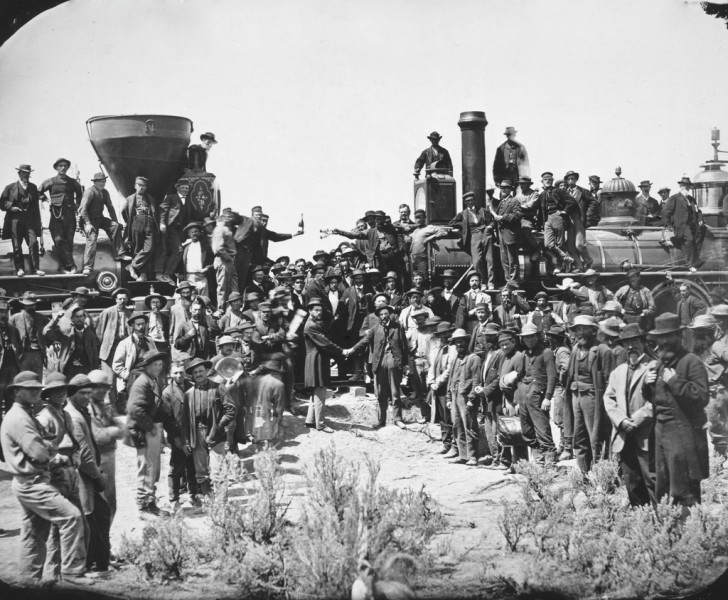
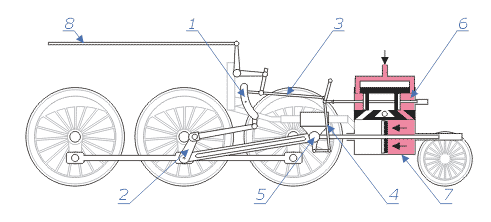
The completion of the transcontinental railroad, 1869 (right); animation of a double-acting steam engine powering a locomotive (standard arrangement from 1850s) (left).
Lecture 9 slides.
For Problem set 9, due Thursday April 26, finish the optional problems from PS 8 problem 1 (looking at state-by-state Sankey diagrams).
Lecture 10: The 2nd great revolution: electricity

The technology conversion grid
Lecture 10 slides.
Readings:
- Read the first part of the
power plants
chapter from the great book "Infrastructure: A Field Guide to the Industrial Landscape", by Brian Hayes. Read the section on fossil-fuel power plants, to page 201.
- For those who have not taken physics since high school, you may find this
background on electricity useful as reinforcement of Thursday's lecture. For now, the most relevant material is up to the middle of p. 9 (but of course read further if you want to).
Problem set 10. Due Tuesday May 1. And the conversion grid showing technologies that we use to convert energy. (Look at the grid only after completing problem 2A.)
Lecture 11: Electricity II

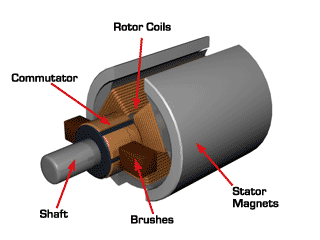
Simple brushed DC motor, single loop (L) and multiple loops (R).
Lecture 11 slides.
Problem set 11. Due Thursday May 3.
Readings on electricity history:
- An 1882 New York Times
article
on the opening of Edison's first power plant in New York and the first lights in the New York Times building
- Another article
article 125 years later on the shut-down of the last DC power generation from Edison's original New York system.
- The section on Tesla vs. Edison in the electricity background reading
- Skim this description of the development of hydropower at Niagara at a U. Buffalo
web page.
- Henry Adams' famous
essay
about his awe at the generators being displayed at the Paris 1900 World's Fair. Read up to the famous line "...he found himself lying in the Gallery of Machines at the Great Exposition of 1900, his historical neck broken by the sudden irruption of forces totally new.''. (Another famous line from this essay is "Nothing in education is so astonishing as the amount of ignorance it accumulates in the form of inert facts.")
- Optional The front page of the Buffalo Courier on Jan 13, 1897 had a half-page description, with illustrations, of a banquet held in honor of the successful transmission of electric power from Niagara Falls to Buffalo. The guest of honor was Nicolas Tesla, the inventor of the technology used for transmission.
- Optional A
website describing early electrification projects, including the electrification of Buffalo. Skim but read the section describing the discussion of different strategies for transmitting power, including compressed air.
- Optional This
website giving pictures and descriptions of the first power transmission projects in the U.S., 1889-1909. (The site is by a group devoted to the electrical insulators use in high-voltage power lines.)
Lecture 12: Electricity III

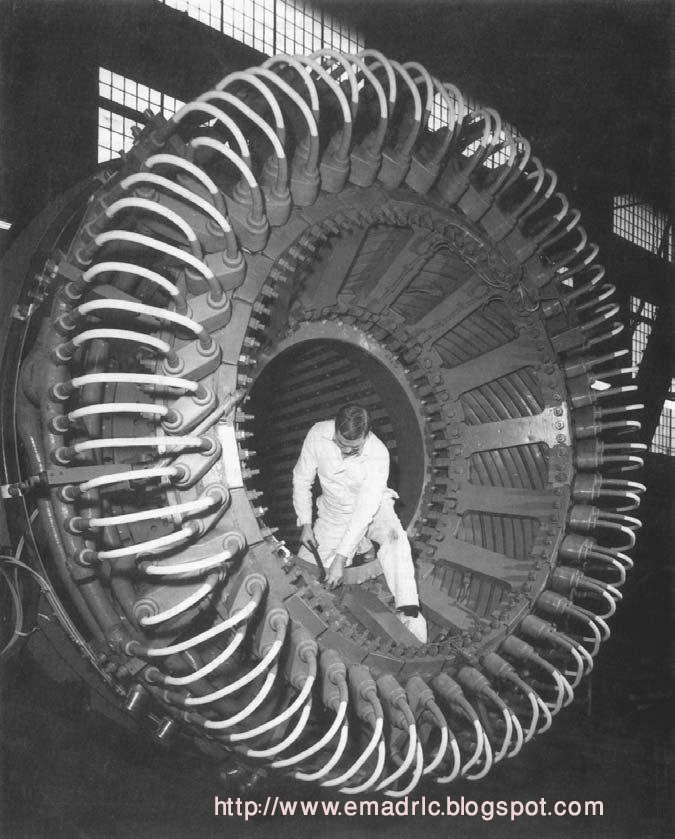
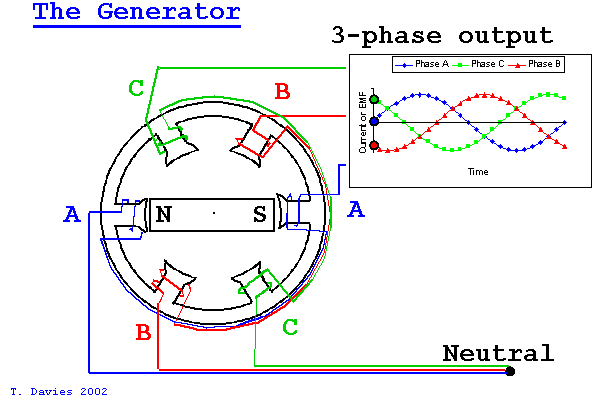
L: High-voltage transmission lines, from NordReg
M: 660 MW generator, stator end windings
R: 3-phase generation
Lecture 12 slides
Problem set 12. Due Tuesday May 8.
Readings:
- (In prep for Tues. lecture) The chapter from the Hayes book titled "The Grid". You can skim for now, but you will need to read this more carefully for upcoming problem sets.
- (In prep for Tues. lecture and Wed. lab) Pick a reading about grid operators (often "independent system operators", ISOs, or "regional transmission organizations", RTOs). Choose among: a New York Times article about grid operators; a brochure from New England ISO, and this 2015 article from "UtilityDive" describing how activist groups in the Southeast, one of the few parts of the country served by traditional utilities instead of an RTO, are pushing for creation of an RTO in their area.
- Optional A more detailed
reading
on electric motors.
Field trip, Fri. May 4. Museum of Science and Industry to see their cogeneration plant (and locomotive). Meet at 7:30 AM at N. entrance to museum.
Lecture 13: Electricity IV: generation, grid management and markets
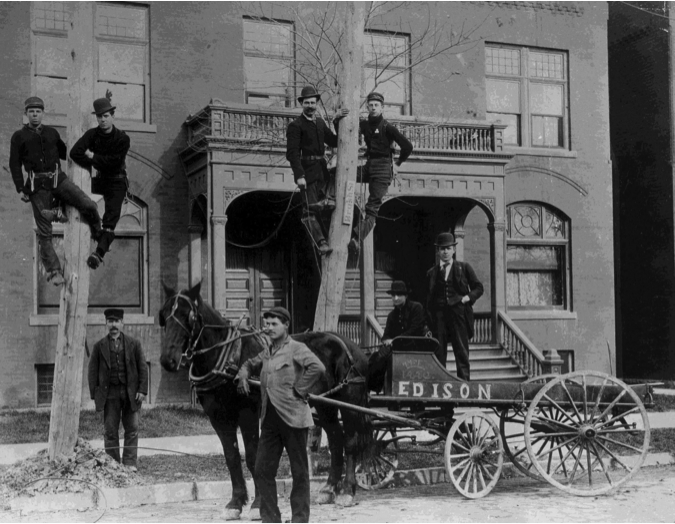
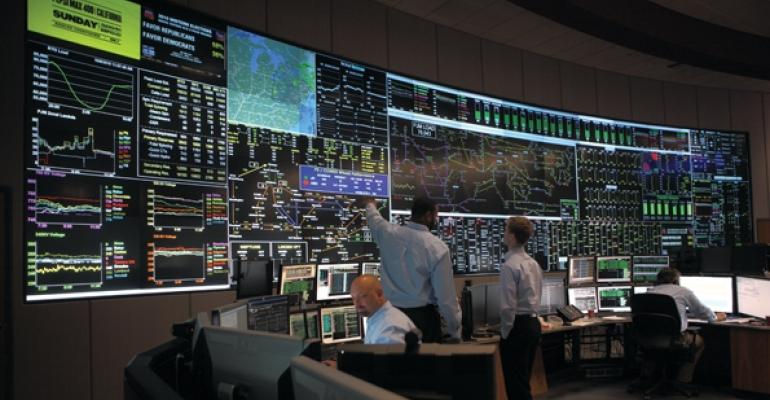
Edison Illuminating Co, Detroit 1900 (left); PJM control room ca. 2016 (right)
Lecture 13 slides
Problem set 13. Due Thursday May 10. You'll need to read the readings below and look at realtime information on electricity markets, which is available online for all RTOs and ISOs through links here. Click on "current grid conditions" under "PJM" to get the latest locational marginal prices (LMPs), generation mix details, etc. for the RTO that serves Chicago. As of 8 AM Wed. Mar 9th, LMPs in Chicago were negative!
Readings in prep for Wed. lab:
- Read this slide deck on electricity markets and regulation carefully, so that you can start from an informed place in the discussion. Make sure that you have also done the readings from Lecture 12 above.
- A summer 2017 article from RTO Insider on California's "duck curve", which requires that some renewables be "curtailed" (turned off) in the middle of the day. It can be interesting to browse around on this site to get a feel for electricity market issues in general.
Lecture 14: End of electricity, turbines, wind

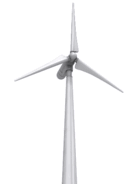
Francis hydro turbine (left); wind turbine (right)
Lecture 14 slides
Problem set 14. Due Tuesday 15.
Readings and videos on wind (watch videos before wind farm trip)
-
The wind section of the Hayes book chapter on
power plants (p. 215-221). This is pretty basic and a bit out of date given changes in wind turbines.
- Watch videos of wind turbines being built. This time-lapse shows installation of a tiny 330kW turbine; not typical but interesting because the turbine is so small they hoist the generator in separately instead of lifting a complete nacelle unit. This time-lapse is of a somewhat bigger turbine, though still smaller than the current norm of 2 MW. Finally this video shows a very large 3.6 MW turbine.
- A long video describing the inside of a wind turbine. From 2010 so not that recent, but excellent graphics.
- (Optional) Some brief notes on rotational vs. linear velocity, if you need review for the problem set.
- (Optional) An information page on the Vestas V100 turbines (and click for a brochure). These are designed for use in low wind, and can operate in winds with speed as low as 3 m/s ("good" wind is ~ 8 m/s). The turbines are "variable speed", i.e. they need not be synchronized to the elecrtical grid. They do still use a gearbox to let the turbine turns at very low speeds while generator spins more rapidly.
- (Optional) The very useful and important Wind Technologies Market Report, produced each year. This one is for 2016. A goldmine of useful information about the U.S. wind market.
Reading on solar PV (in preparation for lab)
- These notes on solar PV physics are intended for lab prep, but are also good background.
Lecture 15: Wind, hydro
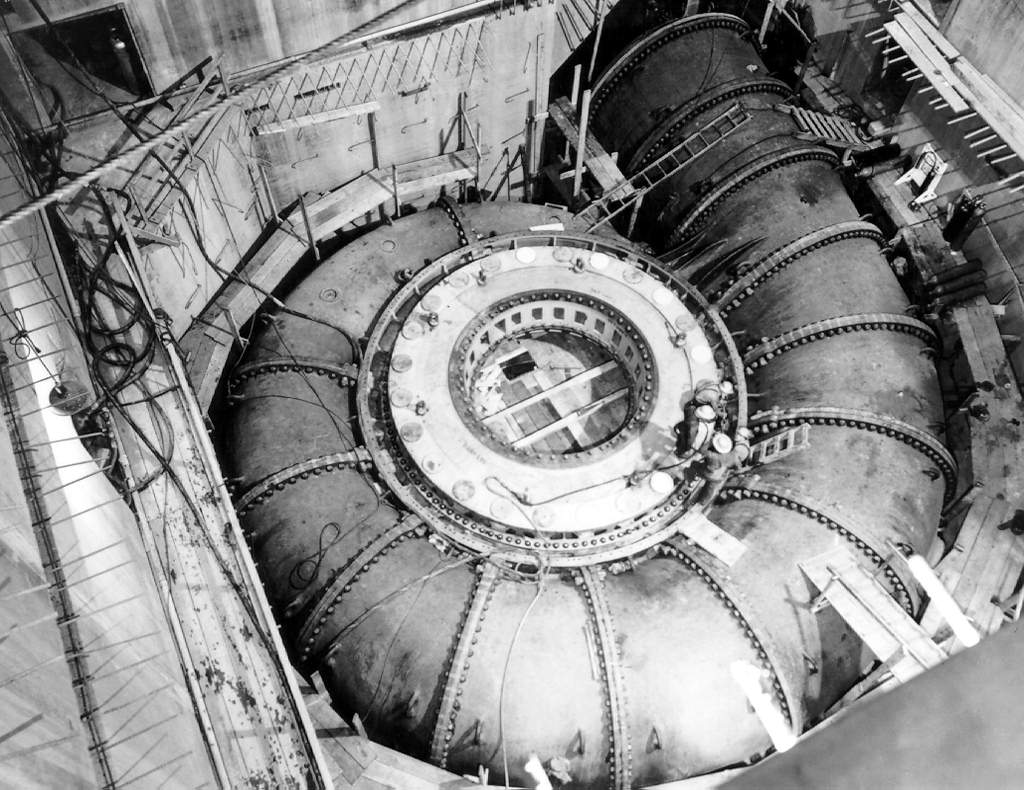
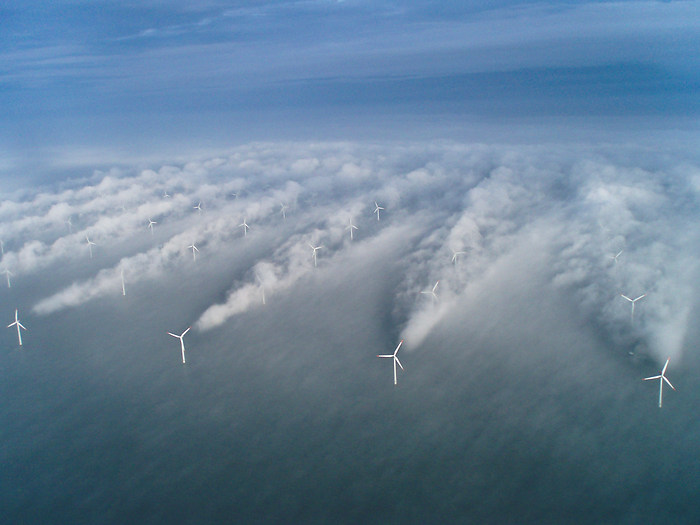
(Left): Inlet scroll of one of the Francis turbines of the Grand Coulee Dam, during construction
(Right): Turbulence behind offshore wind turbines at Horns Rev 1, Denmark (image: Christian Steiness)
Lecture 15 slides, and some
extra slides on hydro
Problem set 15. Due Tuesday 15.
Reading and videos on hydro
-
The hydro section of the Hayes book chapter on
power plants (p. 212-215).
-
An explanation of the three types of hydro turbines.
- A promotional video on the Three Gorges dam project on the Yangtze in China, completed in 2012. Three Gorges is the world's largest electrical generation station, with 22.5 GW of installed capacity.
- (Optional, skim).
Video
of Three Gorges while it was being built.
No lecture Th. May 17
Meet to discuss projects.
Field trip, Fri. May 18. Kelly Creek Wind farm. Note change of date. This will be a bus trip.
Lecture 16: End of wind, beginning of internal combustion engines / transportation
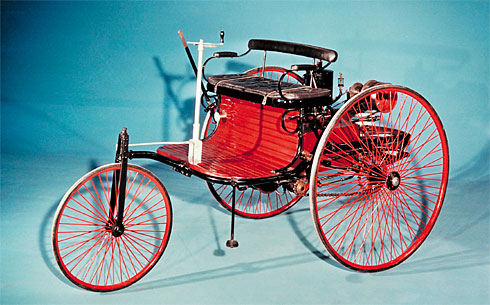
Gas- or petrol-powered car, Karl Benz, 1886.
Lecture 16 slides.
No PS 16
Lecture 17: Internal combustion engines / transportation (make-up time, Wed. 3:30 PM, Hinds 451))
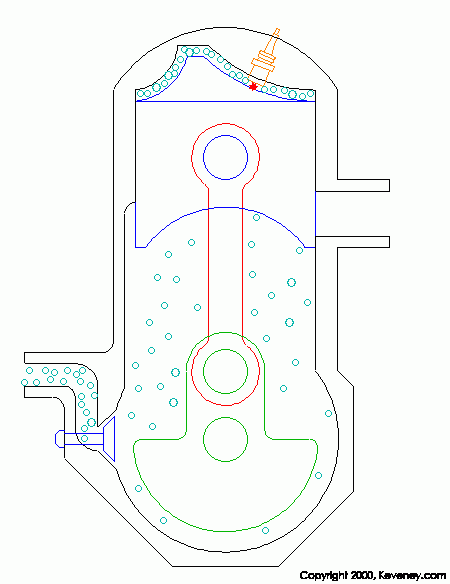
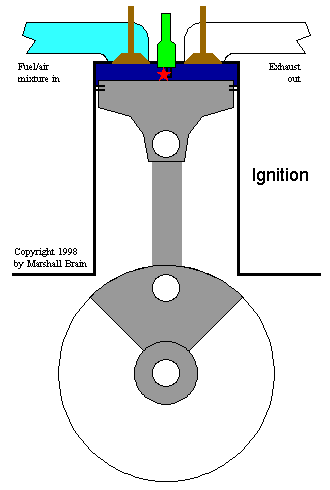
Left: two-stroke engine. Right: four-stroke (Otto cycle) engine
Lecture 17 slides as pdf and
pptx to see the animations.
No PS17
Lecture 18: End of transportation, fossil fuels
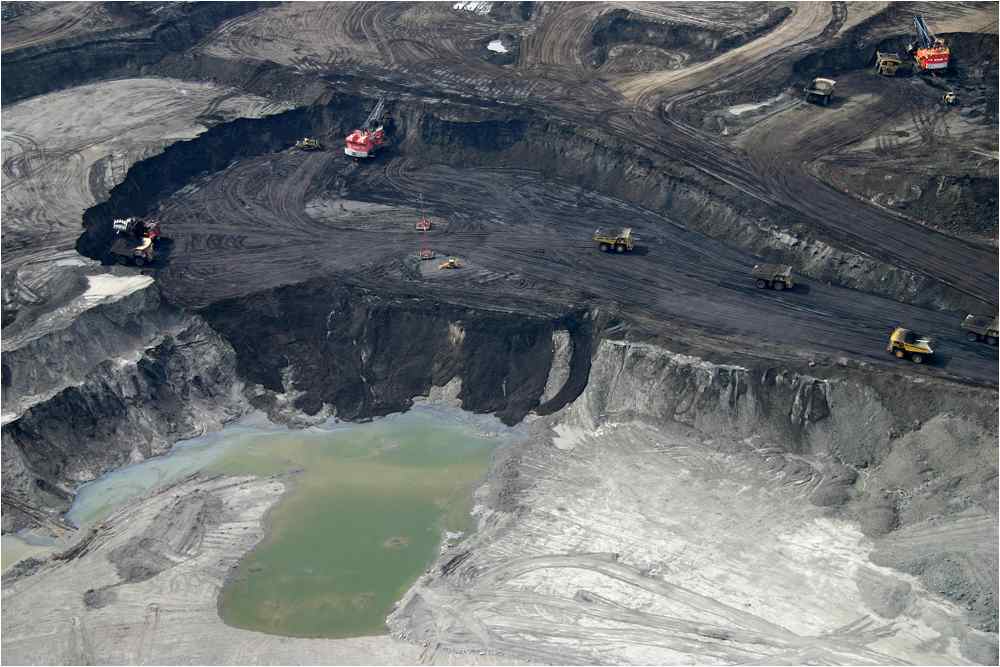

L: Alberta oil sands. Image: David Dodge / Pembina Inst.
R: Conventional drilling vs. hydraulic fracturing for gas.
Lecture 18 slides.
Problem set 18. Due Tuesday May 29.
Readings
- Read the oil & gas
chapter of the Hayes book. You will need this for the problem set.
- Fuel usage in driving: You may find this reading on air and rolling resistance useful for the problem set.
- Steam cars I: watch this video of Jay Leno talking about and driving his 1925 Doble E-20 steam-powered car, once owned by Howard Hughes, which burns gasoline externally and hit over 130 mph.
- Optional: Steam cars II. Read a 1959 Harper's
article about the advantages of steam for automobiles, and its potential return.
- Optional. Read two articles from the 1902 edition of "Automobile Review Magazine" describing the new gasoline fuel and improvements in carburetors to cope with variations in fuel properties. Excerpts are
here; search on "Subject of Gasoline" to find the right spot and read through the following article, "Properties of Gasoline". The first article begins: "When the explosive engine first came to be used for vehicle propulsion, the explosive mixtures were obtained by drawing air over the surface of some of the highly volatile naphthas..."; the second describes gasoline as a "byproduct in the manufacture of kerosene from crude petroleum".
- Optional. Read this article from Wired on the history of the electric car, and General Motors' new position as leading the push to bring electrics back with its Chevrolet Bolt. The 2018 version of the Bolt claims a range of 238 miles per charge. The CEO of General Motors, Mary Barra, publicly asserts a longterm plan to eliminate gasoline from their line and go all-electric.
Field trip, F. May 25. Argonne National Laboratory, for solar PV and Advanced Automobile laboratory. Meet 7 AM in front of Hinds Geophysical Laboratory, 5734 S. Ellis.
Field trip, Th. May 31. BP Whiting Oil Refinery.
 Energy / wealth relationship. Data: World Bank 1960-2011.
Energy / wealth relationship. Data: World Bank 1960-2011.
 Earth's primary energy flows.
Earth's primary energy flows.
 Fields in Oklahoma, Oklahoma Farm Report
Fields in Oklahoma, Oklahoma Farm Report








 Child workers in in the Bibb Mill in Macon, GA., between 1908-1912. Photo: Lewis Hine
Child workers in in the Bibb Mill in Macon, GA., between 1908-1912. Photo: Lewis Hine

















